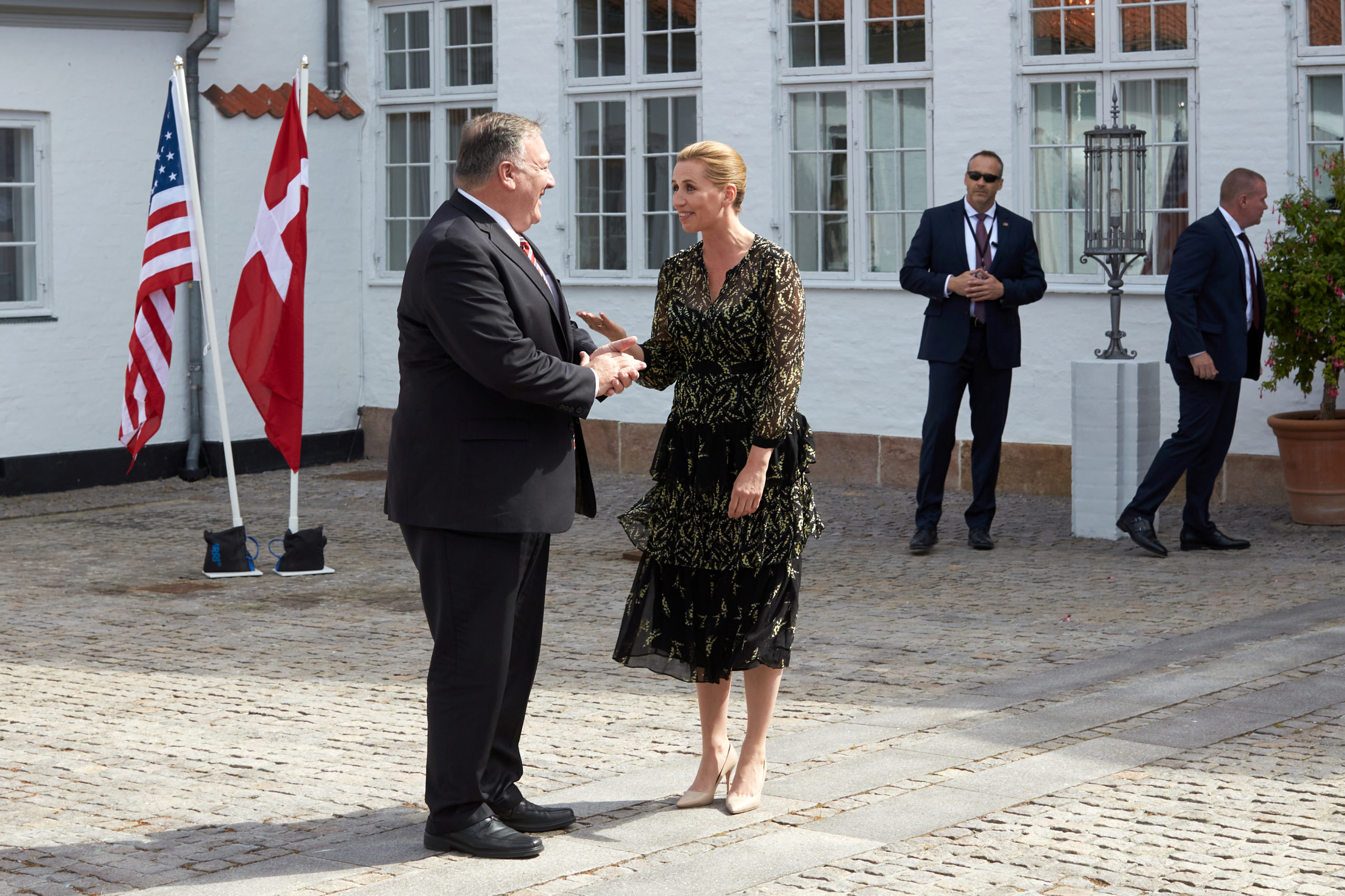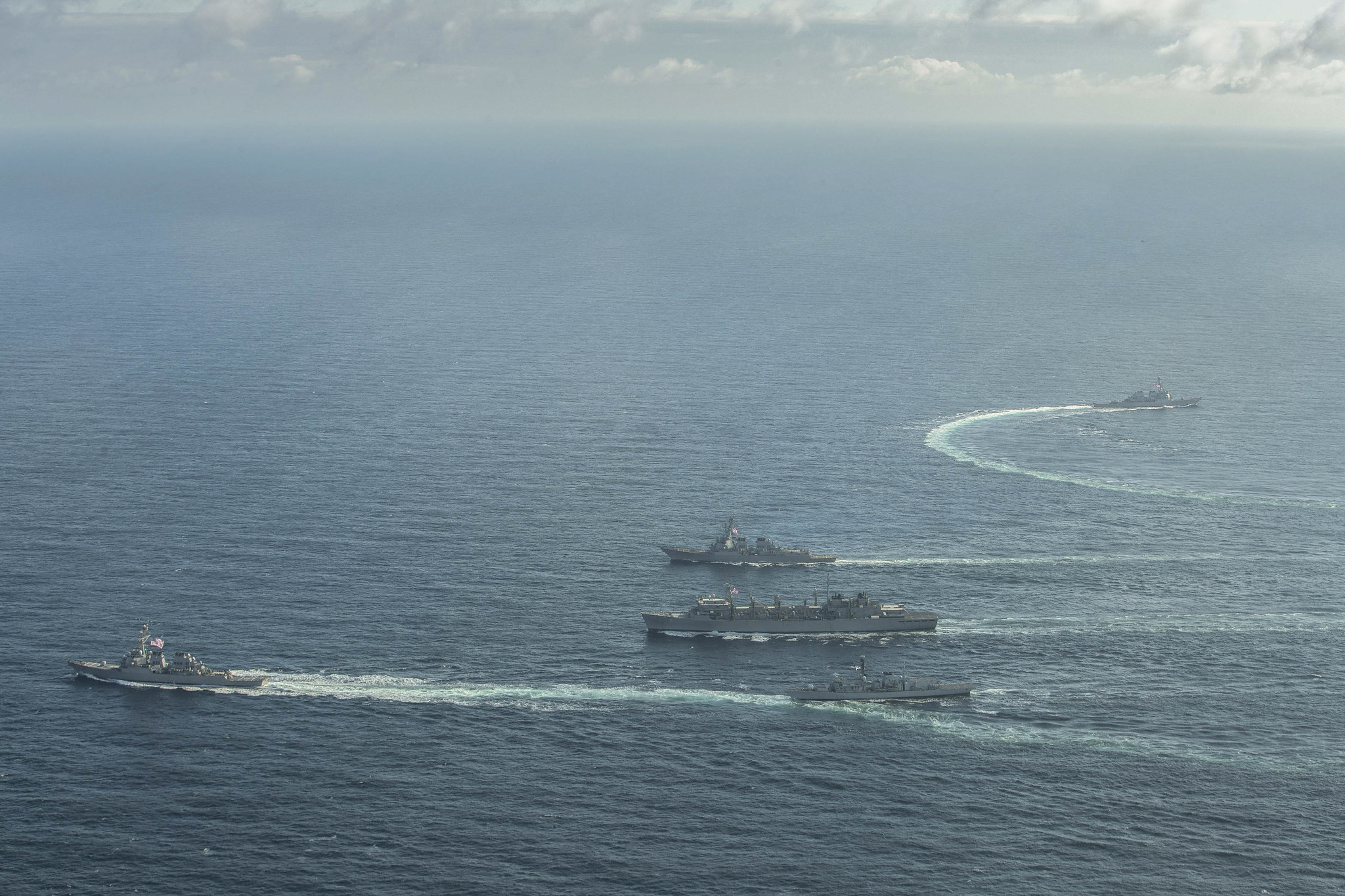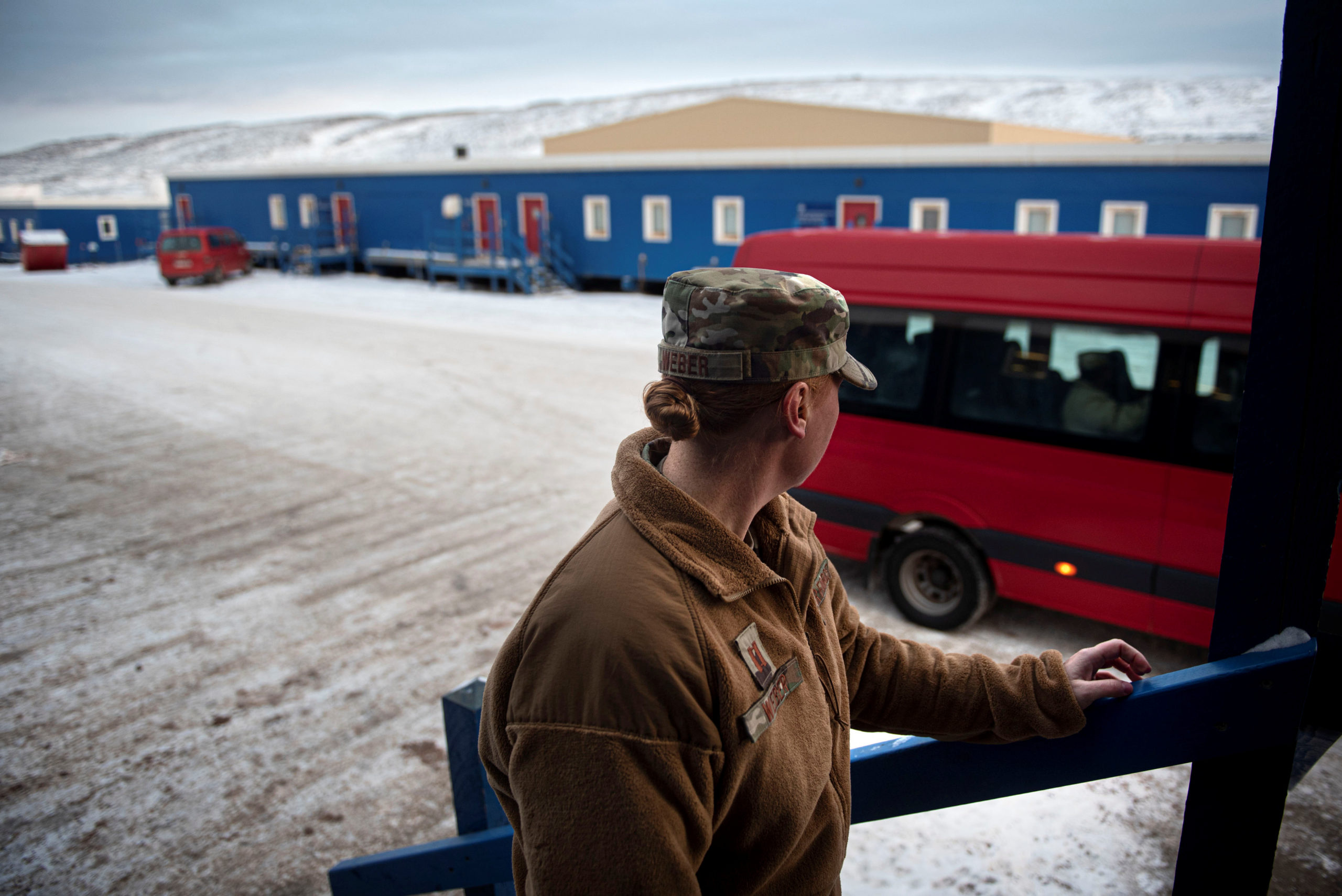How a US pivot to the north changes the European Arctic
President Trump’s idea of buying Greenland is no longer on the table, but Denmark and Greenland are preparing for a sustained increase in U.S. attention.

It was a tiny piece of news, almost no news at all.
Denmark’s national news agency put out only the slightest of items — I almost missed it — when Danish Defense minister Trine Bramsen announced on her way to Nuuk last week that she would bring with her a political advisor who was to remain in Greenland’s capital as a new intermediary between the minister, her staff in Copenhagen and the administration in Greenland, 3,500 kilometers to the north.
She flatly rejected a suggestion that this unusual arrangement had anything to do with the fact that the U.S. consulate in Nuuk has just reopened after more than 60 years of deep sleep.
“I made this decision long ago, so it does not have anything to do with that. This is about cooperation between Denmark and Greenland,” the minister said.
“I have decided that from now on we will have a political advisor in Greenland. This is in light of the increasing developments in the Arctic security- and defense-wise,” she said.
This was deftly put. The minister managed to remain truthful and at the same time diplomatically obfuscate the issue. In fact, the placement of a political advisor of this sort in Nuuk has very much to do with the mushrooming U.S. involvement in Greenland, but the minister was also right to indicate that the great change in the Arctic, which has now necessitated her placement of a special Danish advisor on military affairs in Nuuk, happened long before the reopening of the U.S. consulate in Greenland this summer.
The rapid increase in U.S. attention to the Arctic has long manifested itself in our European part of the Arctic and it is has in many ways direct impact on the political environments, as indicated not only by the reopening of the U.S. consulate in Nuuk, but also, for instance, by the semi-permanent stationing of U.S. marines in northern Norway since 2017 (although this will soon be discontinued), the return of the U.S. military to Keflavik, the former air base in Iceland, or, as in this recent case, by the placing of a political advisor to the Danish minister of defense in Nuuk.
In May, four U.S. naval ships, accompanied by a British vessel, sailed into the Barents Sea north of Norway to conduct maritime security operations closer to Russian waters than any exercise of its kind since the Cold War in the mid-eighties. According to a U.S. Navy press release, the operation included three Arleigh Burke-class Aegis destroyers, Donald Cook, Porter and Roosevelt, all designed to launch guided missiles, supported by a fast combat support ship.

In June, a school of Norwegian F-16s and F-35s fighter jets trained with one of the largest bombers in the U.S. Air Force, a B-52H Stratofortress, during a long-range, long duration strategic bomber task mission throughout Europe and the Arctic region. The flying fortress flew closer to Russian air space in the Arctic than any other of its kind in recent years.
In late July the Roosevelt, one of the destroyers mentioned, was back in the Arctic, sailing as far north as 78 degrees:
“Today my crew has operated above the 66th parallel for twenty-eight days and counting, and I am thrilled to award them the Navy Arctic Service Ribbon. This ribbon symbolizes Roosevelt’s exceptional maritime operations in the high north and a sustained U.S. naval presence in Arctic waters, ” said Ryan R. Kendall, commanding officer aboard Roosevelt, according to the Barents Observer.
“Maritime operations by USS Roosevelt are the most visible and persistent demonstrations of the Navy’s commitment to Arctic security,” he added.
I was reminded of a public speech by the Russian envoy to Copenhagen Vladimir Barbin last year, where he suggested that the impressive increase in Russian military spending in the Arctic, including the massive refurbishment of the Nagurskoye Air Base further north than any Russian military outpost, was spurred not the least by exactly such U.S. missions. After Russia’s annexation of Crimea in 2014, statements like that from Russian representatives are often dismissed as half-truths or less, but the recent increase in western and U.S. military activity in the Arctic is indeed noteworthy.
No more talk of buying Greenland
Not long after the Roosevelt’s travels in the Far North, U.S. Secretary of State Mike Pompeo visited Copenhagen. To many in the U.S., it may be hard to imagine how big an event such a visit is for a small country like Denmark, but take my word for it. A visit by the secretary of state of the U.S. is not taken lightly here at all. I was invited to sit on an all-day panel of commentators on one of our national broadcasters which provided non-stop coverage for more than eight hours of television. Pompeo was received by Prime Minister Mette Frederiksen, and not only — as would normally be the case when a foreign secretary visits — by his Danish counterpart, Foreign Minister Jeppe Kofod, with whom he had talks only after meeting with Frederiksen.
The secretary’s visit came less than a year after president Trump’s confirmation on TV that he and his staff had discussed for some time how the U.S. could perhaps buy Greenland, complete with its 57,000 inhabitants, from the Danish government.
“A large real estate deal” that would be “strategically nice for the US”, as the president put it in August 2019. Our prime minister dismissed the discussion as absurd, and president Trump consequently cancelled a state visit to Denmark.
In Copenhagen, Pompeo made no mention of Trump’s purchase suggestion, but it has, of course, hardly been forgotten here. Trump in essence indicated that the U.S. was no longer satisfied with running Thule Air Base in the north of Greenland or working with Denmark and semi-autonomous Greenland as the U.S. and its defense forces have done since the Second World War. This suggestion sent shockwaves through Copenhagen and Nuuk, and it led to rapid action. It was now clear that the U.S. strategic interest in Greenland has grown to a degree where status quo is no longer an option, and that Greenland is likely to remain a strategic U.S. priority long after the current U.S. administration is eventually replaced.

The Danish government acted firmly on this knowledge. Shortly after Trump’s suggestion, the government announced a hefty increase in funding for Denmark’s Arctic Command in Nuuk, a commitment reconfirmed by Kofod in a press briefing during Pompeo’s visit to Copenhagen.
The practical examples of such Danish follow-ups on the renewed U.S. focus on the Arctic keep coming. Only last week, Maj. Gen. Anders Rex, commander of Air Command Denmark for the Royal Danish Air Force, wrote in Defense News, a U.S. based news outlet, how several of Denmark’s newly acquired F-35 fighter jets will be equipped to work in the Arctic.
“The F-35 will be pivotal in the execution of Danish air defense and sovereignty. Whether it will also perform missions in the Arctic is undecided, but some of the Danish F-35s will have provision for a drag chute to enable operations from icy runways. Coupled with the Greenlandic decision to extend a number of air fields to more than 2,000 meters, it gives vastly increased operational opportunities for fighter operations,” the commander explained.
During Pompeo’s visit to Copenhagen, the idea that the U.S. might indeed buy Greenland was all but invisible. It has clearly been shoved firmly back on the shelf, but it served as an ever-present reminder and left nobody in doubt of Secretary Pompeo’s seriousness when he spoke of Greenland:
“Quite simply, it’s a new day for the United States and Greenland. Reopening the U.S. consulate in Nuuk reinvigorates an American presence that was dormant for far too long,” he said during the press briefing.
“The United States has also signed new memorandums of understanding to cooperate with our partners in the Kingdom of Denmark that cover a wide range of areas, like growing Greenland’s mining and energy sectors through transparent investment, helping manage land and fisheries, increasing tourism, and much, much more,” he added, indicating again how significant the renewed U.S. engagement in Greenland is.
At no point before 2019 has the U.S. been involved like this in civil affairs in Greenland. Now, with an initial input of $12 million in aid, technical advisors from the U.S., including USAID, are to manage civil development projects in several locations in Greenland, all based on a set of deals entered into directly between Nuuk and the Trump administration in Washington without any direct involvement of the Danish government in Copenhagen. Many see this more direct U.S. approach to Greenland as a host of new opportunities; others are busy ruminating about possible hidden U.S. motives.
During his visit to Copenhagen, Pompeo announced that one of the next steps in the renewed U.S. involvement in the Arctic will be the opening of similar political avenues of formal communication between Washington and Tórshavn, the capital of the Faroe Islands, which like Greenland is a semi-autonomous part of the Danish kingdom that has never before enjoyed such attention from the U.S.
Only days before, after a visit to Tórshavn by the U.S. Ambassador to Denmark Carla Sands, the media reported that U.S. naval ships would likely become much more frequent in Faroese ports. In a nation with only 51,000 inhabitants, this is important news, both politically and from a business perspective, and while Pompeo did not comment in Copenhagen on this issue of potential U.S. military use of the Faroese ports, he did highlight the formalization of new U.S.-Faroese links:
“I’m pleased to announce today that the United States and the Faroe Islands have agreed to start a formal dialogue to talk about key issues like healthy fisheries and enhanced commercial engagement,” he said.
During his one-day visit to Copenhagen, Pompeo met directly with representatives of the administrations in Nuuk and Torshavn. Steen Lynge, the minister of foreign affairs of Greenland, and Jenis av Rana, his Faroese colleague, were both invited to parts of the meetings by the Danish government — which brings us back to the new Nuuk-based political advisor to Denmark’s defense minister.
As Bramsen indicated in her announcement last week, her new advisor is to bring up to speed coordination between Nuuk and Copenhagen. Also, it is fair to assume, the advisor is to make sure that the administration in Nuuk feels that it is fully informed about all relevant negotiations between the U.S. and Copenhagen — a matter which was not previously always resolved to Nuuk’s satisfaction.
According to the intricate ways of the Danish Kingdom, Greenland and the Faroe Islands cannot pursue their own separate policies when it comes to matters of defense or security. And since Pompeo and Sands have been very clear that the U.S. engagement in the Arctic is very much designed to defend the U.S. itself against Russian aggression and to counteract Chinese advances in the Arctic, it is not always easy to find out exactly what the Faroese and Greenlandic leaders are authorized to talk to the US envoys about and what they are not.
The new political advisor in Nuuk is there to sort out exactly such questions and to make sure that upcoming military developments in Greenland — whether funded by U.S. or Denmark — happens in tight coordination between Copenhagen and the Nuuk’s self-rule government. This is a must if the leaders in Greenland are to remain satisfied with the existing power-sharing within the Kingdom of Denmark and it is important for the maintenance of both Denmark’s and Greenland’s vital relations with the U.S. at this time of the American pivot to the North.
CORRECTION: This article originally misspelled the name of Denmark’s defense minister. It has been updated to correct the error.